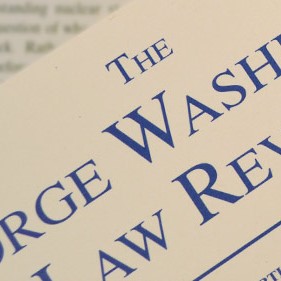Stuart Minor Benjamin & Arti K. Rai · November 2008
77 GEO. WASH. L. REV. 1 (2008)
Innovation is central to economic growth and human welfare. Government officials and commentators have recognized this reality and have called for a variety of different substantive incentives for stimulating innovation. But the question of how an innovation regulator should be structured has received little attention. Such consideration is important not only because of the significance of innovation but also because current government innovation policy is so haphazard. There is no government entity that looks at innovation broadly, and the narrower agencies that regulate aspects of innovation policy not only fail to pay systematic attention to innovation goals but often act at cross-purposes with each another.
In this Article, Professors Benjamin and Rai analyze how government policy on innovation should be structured. Drawing on existing theoretical and empirical work, as well as their own original empirical research, they propose the creation of an entity in the executive branch that would both analyze pending agency action and offer regulatory suggestions of its own. This entity would introduce a new, trans-agency focus on innovation while drawing upon, and feeding into, existing executive branch processes that aim to rationalize the work of disparate federal agencies. This approach, Professors Benjamin and Rai contend, offers a great improvement over existing government institutions while avoiding a costly (and politically infeasible) remaking of the administrative state.

